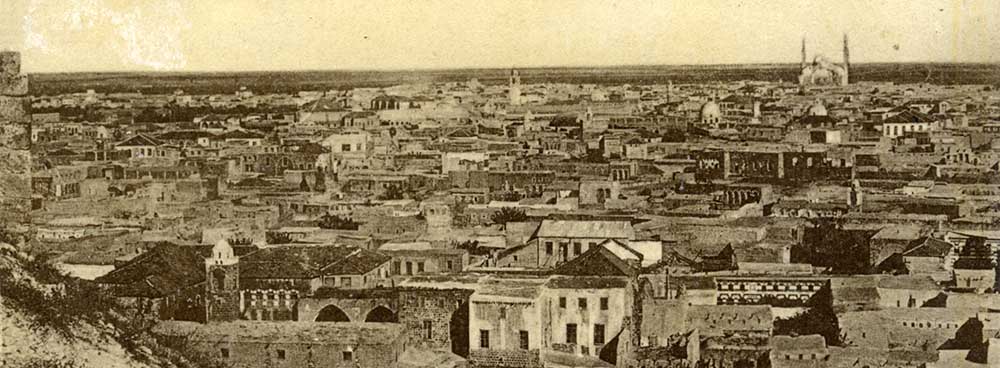Introduction:
Like many travelers to Syria, I had always underestimated Homs until I visited the city in 2005 while working on an economic report. I discovered a charming city which in many ways reminded me of Aleppo with its diverse religious and ethnic communities, ancient citadel, or what remained of it, and covered bazaar.
On my frequent visits to Syria, I often crossed the 400 kilometers between Damascus and Aleppo invariably stopping in Hama, some 45 minutes north of Homs, as I was convinced that Homs had nothing to offer. In contrast, Hama boasted spectacular water wheels dating back to the 13th century. After grabbing a small bite, I would sit on the banks of the Orontes to admire and listen to these wooden giants as they ground and groaned over the river’s waters.
Homs, the country’s third largest city, has had a long and rich history but was never as recognized as its counterparts. Excavations at the citadel overlooking the city indicate that the earliest settlements date from 2,300 B.C.E.

A panoramic view of Homs from 2005. A similar image taken in the early 1900s. Phot. (L) Norbert Schiller. Phot. (R) Wattar Freres
Under Byzantine rule, Christianity gradually replaced paganism. In the 7th century, the settlement was conquered by Moslem Arabs who renamed it Homs. The city remained strategic under successive Moslem dynasties, and it was only when it fell under the Ottoman umbrella in 1516 that it began to decline in importance. Homs came to the forefront once again in the mid-19th century with the cotton boom. Between Hama and Homs there were an estimated 5,000 cotton looms in service to meet the growing demand for cotton goods.
After WWI the Ottoman Empire was split among European powers and Syria came under French rule in 1923. Two years later, Druze leaders in the south led a revolt against the French and were quickly joined by tribal leaders in both Homs and Hama. Even though the uprising was successful in the countryside, it failed in the cities. The French bombardment of Hama was so severe that the city center was largely destroyed and much of its population was forced into exile. In 1932, the French moved their military academy from Damascus to Homs most likely to tighten their grip over the rebellious provinces. After independence in 1948, the academy was taken over by the Syrian military to train army officers. In the ensuing years the city became famous for hosting the country’s largest oil refinery. When the economy opened up to private investment in the late 1990s, Homs experienced a boom. That all stopped with the Arab Spring, a regional popular uprising against autocratic regimes which disintegrated into a brutal civil war in Syria.

Syria’s largest oil refinery located near Homs. A 1967 photograph of Al Ghantus, a village located along the Orontes River, 12 kilometers north of Homs in the heart of the agriculture farming belt. Phot. (L) Norbert Schiller
Since Homs was never a tourist destination, the photographs available of the city today are mainly limited to postcards taken after the beginning of the French mandate. I have also procured a few original photos of the city most likely taken by French military personnel stationed there in the 1930s.


